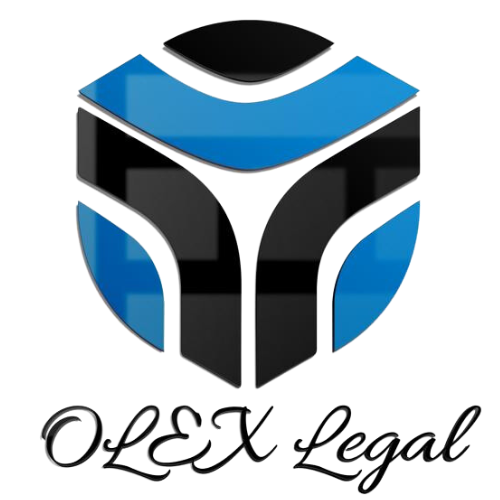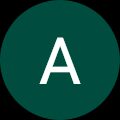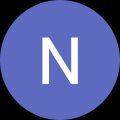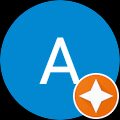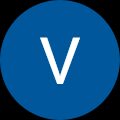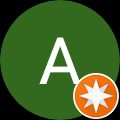
19 May Transitioning from AISH to Senior Benefits in Alberta: A Comprehensive Guide
Turning 65 is a significant milestone for anyone, but for Albertans receiving Assured Income for the Severely Handicapped (AISH), it comes with critical financial and healthcare changes. The transition from AISH to senior benefits can feel overwhelming, especially when faced with new application processes, shifting income sources, and differences in healthcare coverage.
However, with the right information and preparation, this change can be a smooth process. This guide will walk you through everything you need to know about transitioning from AISH to Alberta’s senior benefit programs, including financial support, health benefits, housing assistance, and common challenges seniors may face.
Understanding what to expect will help ensure continued financial stability and access to necessary support during this next stage of life.
Understanding the Transition Process
When AISH recipients turn 65, their AISH benefits automatically end, and they shift to a combination of federal and provincial senior support programs. To make this transition easier, Alberta introduced an automatic enrollment system in July 2019 for provincial senior benefits, reducing paperwork and ensuring no eligible senior misses out on financial assistance.
According to a government announcement:
“Auto-enrolment will eliminate an unnecessary application process and ensure AISH recipients will not miss out on provincial financial assistance they may be eligible for as they reach age 65.”
This automatic process benefits approximately 125 AISH recipients every month as they transition into Alberta’s senior support system.
Federal Benefits Still Require Applications
While the provincial Alberta Seniors Benefit (ASB) is automatic, AISH recipients must apply separately for federal senior benefits. This includes:
- Old Age Security (OAS) – A monthly pension available to seniors who meet the age and residency requirements.
- Guaranteed Income Supplement (GIS) – An additional benefit for low-income seniors receiving OAS.
To avoid any income gaps, seniors should submit their OAS and GIS applications at least six months before turning 65 through Service Canada.
Financial Support Changes
Transitioning from AISH to Senior Benefits
As you turn 65, your monthly income source will shift from a single AISH payment to a combination of federal and provincial senior benefits. These include:
- Old Age Security (OAS) – a federal pension available to all Canadians aged 65 and older.
- Guaranteed Income Supplement (GIS) – additional federal assistance for seniors with low income.
- Alberta Seniors Benefit (ASB) – a provincial benefit to support seniors with low income.
For many individuals, the good news is that the total combined benefits of OAS, GIS, and the Alberta Seniors Benefit may actually exceed your previous AISH payments. For example, while the standard AISH payment is currently around $1,787 per month, the combined monthly benefits from OAS, GIS, and ASB could total about $2,130, offering you a slightly increased monthly income.
Factors Affecting Your Senior Benefit Amounts
The exact amount you receive depends on several factors, such as:
- Your total income (including spouse or partner’s income if applicable)
- Whether you qualify for the full OAS pension
- Your housing situation (homeowner, renter, or long-term care resident)
- Your marital or cohabitation status
It’s important to understand how these factors affect your eligibility and benefit amounts. For instance, seniors living alone or renting typically receive higher amounts than homeowners, reflecting their additional financial needs.
Planning for Smooth Income Transition
To ensure a seamless financial transition, apply for your federal senior benefits (OAS and GIS) at least six months ahead of your 65th birthday. Keeping your income taxes current is also critical, as benefits are calculated based on your previous year’s income reported to the Canada Revenue Agency (CRA).
Health Benefits Comparison
Prescription Coverage Changes
When transitioning from AISH to senior benefits, your prescription medication coverage shifts from AISH to Alberta’s senior health benefit programs. Under AISH, medications typically come at no direct cost to recipients, but under the Alberta Blue Cross Coverage for Seniors, there’s now a co-payment required—up to $25 per prescription.
This added cost can be challenging for some seniors, especially those needing multiple prescriptions. Planning ahead by budgeting for these new co-payments or discussing alternatives with your healthcare provider can help avoid financial stress.
Dental and Vision Care
Dental and vision coverage also change after turning 65:
- Dental Care: The Dental Assistance for Seniors Program covers up to $5,000 every five years for basic dental treatments. This is less frequent than under AISH, where coverage was available more regularly. It’s advisable to schedule essential dental treatments just before your AISH coverage ends.
- Vision Care: The Optical Assistance for Seniors Program provides up to $230 every three years for prescription eyeglasses. Consider obtaining new glasses shortly before transitioning from AISH to maximize your current coverage.
Planning Ahead
Scheduling medical, dental, and vision appointments while still under AISH coverage will help you maximize benefits and minimize unexpected costs once senior benefits begin. If you anticipate higher healthcare expenses, discussing strategies with healthcare professionals early can significantly ease your transition.
Housing and Additional Supports
Support Programs for Senior Homeowners
Transitioning from AISH to senior benefits often includes new opportunities for financial assistance related to housing. Alberta offers several helpful programs for senior homeowners, including:
- Seniors Property Tax Deferral Program: Allows eligible seniors to defer their property taxes using a low-interest home equity loan. This helps seniors maintain financial stability by spreading out tax payments.
- Seniors Home Adaptation and Repair Program (SHARP): Provides affordable loans to help seniors make necessary home repairs or accessibility improvements. This program can help seniors continue living independently and comfortably at home.
Accommodation Assistance
For seniors in rental housing or those living in long-term care facilities, Alberta provides additional support:
- Supplementary Accommodation Benefit: Assists seniors with costs related specifically to accommodations, such as facility fees or rental payments.
Understanding these housing supports can significantly ease financial concerns during your transition from AISH, ensuring your housing situation remains stable and manageable.
Common Challenges During Transition
Temporary Income Gaps
One common challenge seniors face during the transition from AISH is a temporary gap or fluctuation in income. This happens when federal benefit applications (OAS and GIS) aren’t processed quickly enough to coincide exactly with your AISH payments ending. To avoid this, submit your applications at least six months in advance.
Navigating Complex Programs
Another common challenge seniors face is understanding the complexity of the various provincial and federal programs available. Eligibility criteria, income thresholds, and application processes differ between each program, often creating confusion or frustration.
If you find navigating these programs overwhelming, consider engaging professional legal assistance. At OLEX Legal, we offer personalized support to help you understand your options clearly and ensure you’re receiving all the benefits you’re entitled to. Our experienced lawyers can simplify the process, manage paperwork, and advocate on your behalf, making your transition to senior benefits smooth and stress-free.
Planning Timeline and Steps
Preparing early is key to a seamless transition from AISH to senior benefits. Here’s a simple timeline to follow:
12 Months Before Turning 65
- Start researching: Familiarize yourself with available senior programs.
- Schedule a benefits review: If possible, meet with a social worker or contact Alberta Supports for personalized guidance.
6–7 Months Before Turning 65
- Apply for federal benefits: Submit your OAS and GIS applications through Service Canada to avoid income disruptions.
- Ensure tax returns are current: Accurate tax information is critical for calculating benefit amounts.
- Schedule medical appointments: Take advantage of AISH coverage for medical, dental, and vision care before benefits change.
3 Months Before Turning 65
- Confirm provincial enrollment: Ensure your automatic enrollment into Alberta senior benefit programs is in place. If unsure, contact Alberta Seniors Benefit to verify.
- Medication review: Meet with your healthcare providers to review medications and discuss any adjustments due to changes in prescription coverage.
- Update your contact information: Notify Alberta Seniors and Housing if your address or other contact details have changed to ensure timely communication.
At Age 65
- Check your benefits: Confirm you’re receiving all your expected benefits (OAS, GIS, Alberta Seniors Benefit).
- Contact immediately if issues arise: Reach out to the relevant offices (Alberta Supports or Service Canada) immediately if any benefits are missing or incorrect.
- Apply for additional supports: If you have special needs such as housing assistance or supplementary health programs, apply for these supports now.
Resources and Contact Information
For personalized support or specific questions, consider reaching out directly:
- Service Canada (OAS and GIS):
1-800-277-9914
(for federal benefit applications) - Alberta Seniors Benefit:
1-877-644-9992
(for questions specific to provincial senior programs)
Additionally, the Seniors Benefit Estimator on Alberta’s government website is a helpful, secure tool for estimating eligibility and benefit amounts without providing personal details.
Frequently Asked Questions (FAQ)
1. How much money will I receive after transitioning from AISH to senior benefits?
The amount varies based on individual factors such as marital status, income, and living situation. However, in 2025, seniors who qualify for the maximum Old Age Security (OAS), Guaranteed Income Supplement (GIS), and Alberta Seniors Benefit (ASB) could receive approximately $2,130.55 per month. This is higher than the standard AISH payment of $1,901 per month.
2. Will I be automatically enrolled in senior benefits when I turn 65?
Yes, if you are receiving AISH, you will be automatically enrolled in Alberta’s provincial senior benefits when you turn 65. However, you must separately apply for federal benefits (OAS and GIS) through Service Canada at least six months before your 65th birthday to avoid income interruptions.
3. How will my prescription drug coverage change?
Your coverage will switch from AISH health benefits to Alberta Blue Cross Coverage for Seniors. While AISH fully covered prescriptions, the seniors’ program requires co-payments of up to $25 per prescription. This may require budget adjustments if you rely on multiple medications.
4. What happens to my dental and vision coverage?
Your dental and vision coverage will change as follows:
- Dental: The Dental Assistance for Seniors Program provides up to $5,000 every five years for basic services. Under AISH, coverage was more frequent.
- Vision: The Optical Assistance for Seniors Program offers up to $230 every three years for prescription eyeglasses.
These benefits are income-based, so eligibility may vary.
5. Will I need to reapply for benefits every year?
No, reapplication is not required. However, you must file your income tax return every year, as your benefit amounts are calculated based on your reported income. Failing to file taxes could lead to benefit interruptions.
6. What if my CPP disability benefits were reduced because I took them early?
If you took CPP disability benefits early, this reduces the amount you receive in CPP retirement pension at age 65. However, Guaranteed Income Supplement (GIS) is designed to supplement lower CPP amounts, helping ensure your overall income remains stable.
7. How does living in a care facility affect my benefits?
If you live in designated supportive living or long-term care, you may qualify for the Supplementary Accommodation Benefit, which provides additional financial assistance for accommodation costs.
8. What if my income is too low after transitioning?
If you experience financial hardship after transitioning to senior benefits, contact Alberta Supports to see if you qualify for additional assistance, such as the Special Needs Assistance for Seniors Program.
9. Can I receive both AISH and senior benefits at the same time?
No, you cannot receive both AISH and senior benefits at the same time. When you turn 65, you transition out of AISH and onto a combination of federal and provincial senior benefits.
Need Legal Help? Contact OLEX Legal
If you have concerns about your transition, need assistance with applications, or want to ensure you’re maximizing your benefits, consider seeking legal support. OLEX Legal can help you navigate complex eligibility requirements, advocate for fair benefit calculations, and resolve any disputes that may arise during the process.
📞 Contact OLEX Legal Today to schedule a consultation and get expert guidance on your senior benefits transition.
